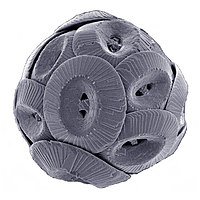
Photo from wikipedia
In the Tohoku region of Japan, 72% of the land comprises mountain forest zones. During winter, severe climatic conditions include heavy snowfall. In such an environment, which is considered high… Click to show full abstract
In the Tohoku region of Japan, 72% of the land comprises mountain forest zones. During winter, severe climatic conditions include heavy snowfall. In such an environment, which is considered high in biodiversity, we assumed that aerobic bacteria would be diverse and would possess the ability to degrade polychlorinated biphenyls (PCBs). In this study, 78 environmental samples were collected from the Tohoku region and 56 aerobic PCB-degrading bacterial strains were isolated. They belonged to the genera Achromobacter, Rhodococcus, Pseudomonas, Stenotrophomonas, Comamonas, Pigmentiphaga, Xenophilus, Acinetobacter, and Pandoraea. Previously reported aerobic PCB-degrading bacterial strains isolated in Japan belonged to the same genera, except that the genera Acidovorax and Bacillus were not identified in the present study. In particular, the isolated Comamonas testosteroni strains YAZ2 and YU14-111 had high PCB-degrading abilities. Analysis of the sequences of the YAZ2 and YU14-111 strains showed that the gene structures of the bph operon, which encode enzymes associated with PCB degradation, were the same as those of the Acidovorax sp. KKS102 strain. Moreover, 2,3-biphenyl dioxygenase activity was responsible for the degradation characteristics of all the isolated strains. Overall, this study suggests that aerobic PCB-degrading bacteria are not specifically endemic to the Tohoku region but distributed across Japan.
Journal Title: Canadian journal of microbiology
Year Published: 2022
Link to full text (if available)
Share on Social Media: Sign Up to like & get
recommendations!